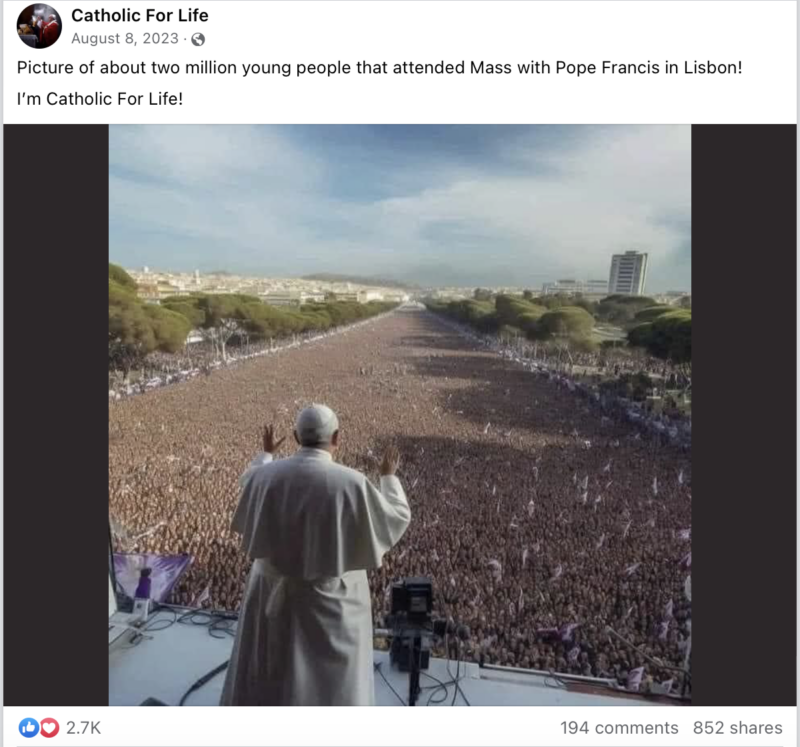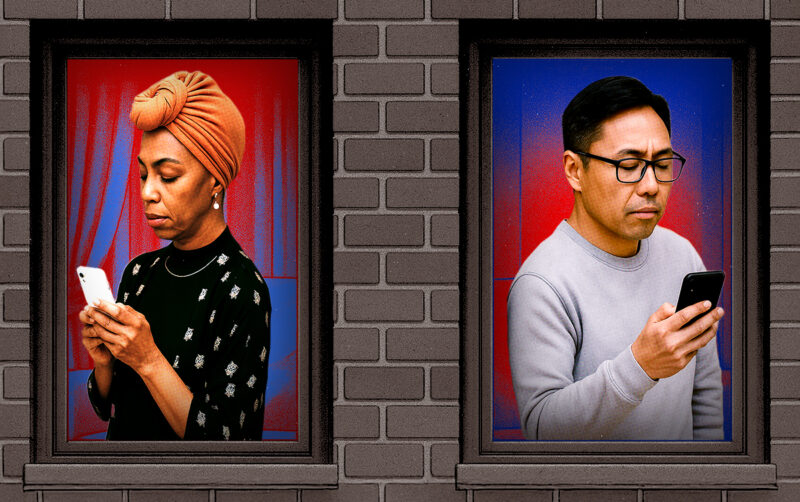News
5 Tips for Spotting Fake News and AI-Generated Media
“[As AI gets better at creating] realistic content, it is becoming increasingly more difficult to distinguish fact from fiction. This problem is exacerbated by the speed at which false rumors spread online with, in some cases, deadly consequences.”
— Hany Farid, co-founder and Chief Scientist of GetReal Labs
With AI improving rapidly, fake images and videos can look shockingly real, making it easier for rage-inducing media to spread. This is a serious problem in any society, but even more so in a deeply polarized one.
The problem is twofold. First, some people deliberately create and share “fake news” in order to arouse rage. In 2023, researchers described a phenomenon they called the “need for chaos” — a willingness to spread false political rumors and create discord due to extreme pessimism and anger.
Second, people are more likely to believe and share things that confirm their fear of and outrage toward the “other side.” The more divided a society is, the more demand for content that aligns with those us-versus-them views (and this applies even to information created with the best of intentions).
This creates a vicious cycle: Fake news spreads, fueling more outrage. That outrage amplifies our divides, boosting demand for more divisive (and often false) content.
We all have a role to play in making the world a less toxic and divided place. One easy thing we can all do is to try to avoid sharing fake, rage-inducing content.
5 Clues to Spot Fakes
Here are five clues that an image, video, or headline may be fake or misleading.
Note: No single clue is surefire. They can be reasons to be skeptical about something and research it more before sharing.
1. It seems unlikely or outrageous
Fake news often involves events that are shocking or highly unusual-seeming. The shocking nature of “fake news” is how it spreads so quickly; people feel motivated to tell others about it. If something seems strange or shocking, it’s worth looking into more.

Example: “Pope Francis Shocks World, Endorses Donald Trump,” read the headline of a credible-looking but fake article that circulated before the 2024 election. This was estimated to have been shared around a million times. Note the use of the word “shocking” in the headline to draw maximum attention.
2. It has strange visual details
AI-generated content often includes odd distortions. If you suspect an image or video may be fake, you can zoom in and inspect it more closely. (But often, it will be easier to just search online about the story.)

Example: An impressive-looking image showed the Pope speaking to millions in Europe — but on closer examination, the Pope was noticed to have only three fingers. After a lengthy investigation, we discovered the Pope still has all ten fingers.
3. Spelling errors or awkward wording
AI-generated content and clickbait fake-news sites often contain typos or weirdly phrased sentences.
AI often has a problem with spelling. Bad and strange spelling can be one clue that an image is fake. Also, some fake news is created for an English-speaking audience by people who don’t know English well; that can be another source of typos or grammatical errors.

Example: During the L.A. fires, images circulated online showing the Hollywood sign burning. In one image, the sign was spelled Hollywoodd, with an extra D. After a lengthy investigation, we concluded the Hollywood sign is indeed spelled with only one D.
4. It sparks anger (especially political anger)
If a piece of content immediately triggers a strong emotional reaction — especially rage about politics — it’s worth slowing down and looking into it more. Outrage fuels clicks and shares; this is one reason fake news so often goes viral.

Example: An image showed ICE agents arresting a man with a Latinos for Trump t-shirt. It went viral but was a false, edited image. Some images, like this one, are created to mock political opponents, but then go on to be believed as true by many people.
5. It’s not being reported elsewhere
If something truly shocking were happening, major news outlets all over the world would be covering it. Even if you don’t trust the mainstream media, you can cynically trust that almost all news outlets want to cover big, shocking world events, if only for their own financial interest. So, if you’re unsure about a story, do an online search to see if reputable sources are reporting it. If they’re not, that’s a big red flag.

Example: In the wake of recent hurricanes, all sorts of fake news swirled, including pessimistic reports alleging incompetence or political bias in disaster relief. When in doubt, look for coverage by respected news organizations.
How YOU can help prevent fake news fires from spreading
Fake news thrives on our instinctual urge to share shocking, strange, and emotion-producing stories. One of the best ways we can all help reduce toxicity and baseless rage, in our daily lives, is to slow down before sharing anything online. Take a moment to verify sources, inspect images for inconsistencies, and search for additional reporting.
We have to push our critical thinking to evolve as fast as AI-generated media evolves. By staying vigilant and educating others, we can help prevent fake news and false narratives from pulling us further apart and causing more harm to our country.
Join the Builders Movement! buildersmovement.org/invite
Keep Reading

How Politics & Social Media Fuel the Gender Divide

Bias Watch: Is Trump Bringing Back Asbestos?
